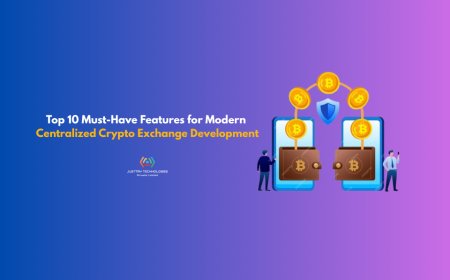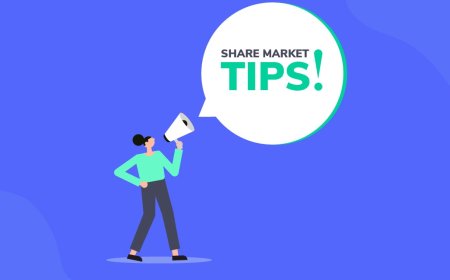Why White Label Food Delivery Apps Are Taking Over in 2025
A white label food delivery app is a pre-built, customizable software solution that businesses can brand as their own. Think of it as a ready-made delivery platform—complete with customer, restaurant, and delivery interfaces—that you can customize with your own branding, features, and business model.
The food delivery industry has evolved from a luxury to anecessityand in 2025, the competition is fiercer than ever. Giants like Uber Eats, Zomato, and DoorDash still dominate, but a new wave of innovation is disrupting the market: the white label food delivery app.
More and more entrepreneurs, restaurants, grocery chains, and even cloud kitchen operators are turning to white label solutions to launch their own branded appsquickly, affordably, and effectively. This shift is changing how food delivery works and who gets to profit from it.
In this blog, well explore why white label food delivery apps are taking over in 2025 and why now is the best time to invest in one.
What Is a White Label Food Delivery App?
A white label food delivery app is a pre-built, customizable software solution that businesses can brand as their own. Think of it as a ready-made delivery platformcomplete with customer, restaurant, and delivery interfacesthat you can customize with your own branding, features, and business model.
Instead of building an app from scratch (which can take months and cost a fortune), white label solutions allow businesses to launch fast with lower upfront investment.
The Rise of White Label Platforms: Whats Driving the Trend?
In 2025, several factors are fueling the popularity of white label food delivery apps:
1. Cost-Efficiency for Startups and Restaurants
Building a custom app can cost anywhere from $50,000 to $500,000, depending on the complexity and team involved. For many small businesses or new entrepreneurs, this is simply out of reach.
A white label food delivery app, on the other hand, offers:
- Pre-built architecture
- Lower development and maintenance costs
- Subscription-based or one-time pricing models
This makes it a highly accessible solution for local restaurants, cloud kitchens, and niche food delivery startups.
2. Faster Time to Market
Speed is everything in todays hyper-competitive environment. Businesses that can launch quickly gain first-mover advantage in local markets.
With a white label app, you can:
- Launch within days or weeks
- Avoid the long app development cycle
- Quickly test your concept and pivot if needed
In 2025, agility is a business superpowerand white label apps deliver just that.
3. Full Branding and Customization
Your brand is your identity, and a white label solution lets you own it 100%. You get to customize:
- App name and logo
- Color themes and UI
- Menu and pricing
- Payment gateways
- Delivery options and more
This white-labeled experience helps build brand loyalty and trust, as customers engage directly with your brandnot a third-party aggregator.
4. Revenue Control and Commission Savings
Third-party food delivery platforms often charge 2035% in commissions per order. That can eat into margins, especially for small restaurants.
A white label food delivery app allows you to:
- Keep 100% of your revenue
- Set your own delivery fees and commission models
- Launch loyalty and reward programs
- Create marketing campaigns to retain customers
In short, it puts control back into your hands.
5. Tech Advancements and Feature-Rich Platforms
White label providers in 2025 are offering far more than just a basic app. Todays platforms include:
- Real-time order tracking
- Integrated payment gateways
- Push notifications and promotions
- Review and rating systems
- AI-based food recommendations
- Multi-restaurant support
- Delivery agent management
These features rival even the biggest playersand you get them at a fraction of the cost.
6. Growing Demand for Local and Niche Platforms
Consumers are becoming more conscious of where they order from. Many prefer:
- Supporting local restaurants
- Ordering from health-focused platforms
- Exploring vegan, organic, or diet-specific meals
- Reducing dependence on large multinational apps
A white label app allows you to tap into niche markets with custom offerings that resonate deeply with targeted audiences.
7. Flexibility to Evolve
The food delivery space is evolving rapidly. New trends like drone delivery, AI-powered kitchens, and subscription meal plans are emerging.
With a white label food delivery app, youre not locked into a rigid system. These platforms are:
- Modular and easy to upgrade
- Scalable with your business growth
- Adaptable to changing customer behaviors and tech trends
This makes them a future-ready investment.
Who Can Benefit from a White Label Food Delivery App?
This isnt just a solution for startups. A variety of businesses are embracing white label apps to expand or diversify:
- Restaurants & Cafes Bypass aggregators and build direct customer relationships
- Grocery Stores Offer doorstep delivery with your own branded app
- Cloud Kitchens Operate multiple virtual brands under one platform
- Franchise Chains Manage multi-location delivery with centralized control
- Entrepreneurs Start a hyperlocal or niche food delivery business with minimal risk
The Bottom Line: Why Its Time to Go White Label
The food delivery market is set to exceed $400 billion globally by 2030, and the competition is heating up. But this growth doesnt just belong to the giants. Thanks to white label food delivery apps, anyone with vision and determination can launch a profitable delivery business in 2025.
These solutions are:
- Affordable
- Fast to launch
- Fully customizable
- Scalable and feature-rich
If you're looking to take control of your brand, own your customer experience, and build a sustainable food delivery business, now is the time.







































